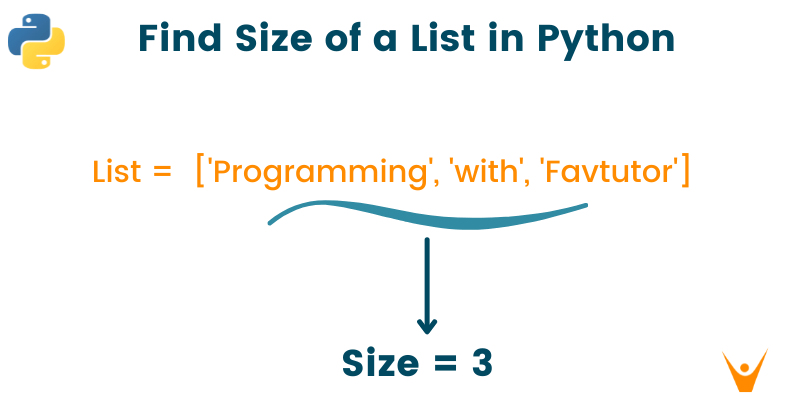Python is one of the fundamental programming languages widely used in the machine learning and artificial intelligence domain. Python possesses various data structures which help you to deal with data effectively and efficiently. The list is one of the sequential data structures in python that is highly used to store data collection and operate on it. In this article, let us study how to find python list size with 3 methods and examples in detail. But before that, let us have a brief introduction to a list data structure in python below.
What are Lists in Python?
List in python is used to store the multiple elements in a single variable. List elements are ordered, changeable, and also allow duplicate values. Hence, Python lists are mutable, which means that you can modify the elements of the lists after they are created. For initiating the list, you have to insert elements inside the square brackets ([]), each element separated by a comma (,) in between. To learn more about lists, visit our article “3 Ways to Convert Lists to Tuple”.
For example:
sample_list = ['Programming', 'with', 'Favtutor']; print(sample_list)
Output
['Programming', 'with', 'Favtutor']
How to Get the Size of a List in Python?
There are 3 methods by which you can find the size of lists in python. Let us learn all of those methods in detail below:
1) Len() method
The best way to find the total number of elements in the list is by using the len() method. The len() method accepts the lists as an argument and returns the number of elements present. Below is the syntax of the len() method:
len(list)
According to programmers, len() is the most convenient method to get the size of the list in python. The len() method works in O(1) time as a list is an object and needs memory to store its size.
Check out the below example to understand the working of len() method in detail:
For example:
sample_list = ['Programming', 'with', 'Favtutor']; list_size = len(sample_list) print(list_size)
Output
3
Is len() method specific to list data structure?
No, len() method is not specifically used to find the size of the list data structure. Programmers also use other data structures like arrays, tuples, and sets while programming in python and often face difficulty finding its length for a different purpose. Therefore, you can use the len() method to get the size of almost all the data structures or collections, such as dictionaries. Using the len() method, you can also get the length of a total number of elements inside the set and frozenset.
2) Naïve method
Other than len() method, you can also loop to find the size of lists in python. In this naïve method, you have to run the loop and increase the counter variable after traversing the element in lists. At last, when the pointer becomes empty, the value stored inside the counter variable is the size of the list. This method is most efficient if you are not available with any other technique. Talking about the basic algorithm, check out the below steps to find the length of the list:
- Declare the counter variable and assign zero to it.
- Using for loop, traverse the elements of the list, and after every element, increment the counter variable by +1.
- Hence, the length of the lists will be stored in the counter variable, and you can return it by representing the counter variable.
For example:
sample_list = ['Programming', 'with', 'Favtutor']; counter = 0 for i in sample_list: counter = counter+1 print(counter)
Output
3
3) length_hint() method
Python has an in-built operator named length_hint() to find the size of the lists. Not only lists, but you can also use this method to find the length of tuples, sets, dictionaries and any other python data structure. The operator.length.hint() method takes the variable as a parameter in which the data is stored. Note that this is the least used method to find the length of data structure as it is only applicable in python programming. Moreover, you have to import the lenght_hint method from the in-built operator library using the "import" keyword, just like shown in the below example:
For example:
from operator import length_hint sample_list = ['Programming', 'with', 'Favtutor'] list_size = length_hint(sample_list) print(list_size)
Output
3
Conclusion
Lists in python are a primary data structure, highly used to store the sequential data inside a single variable. At the same time, the information on measuring the size of a list in python is one of the most basic operations that you must know as a programmer. Therefore, we have mentioned the three common methods to find the size of the lists in python with examples and their respective output. It is highly recommended to learn and understand them for making your programming efficient and faster.








